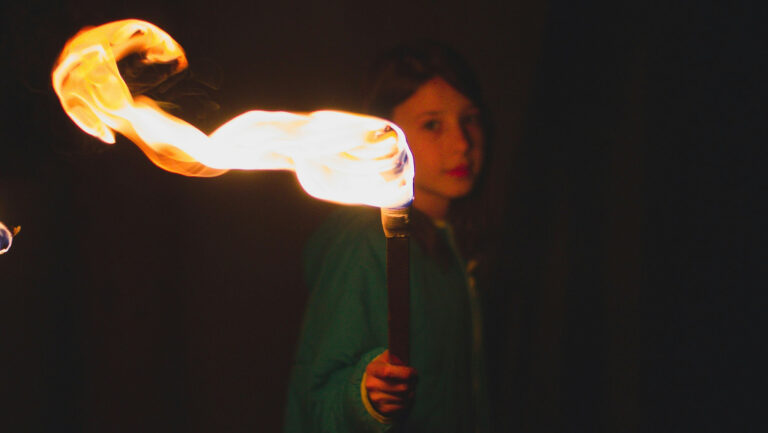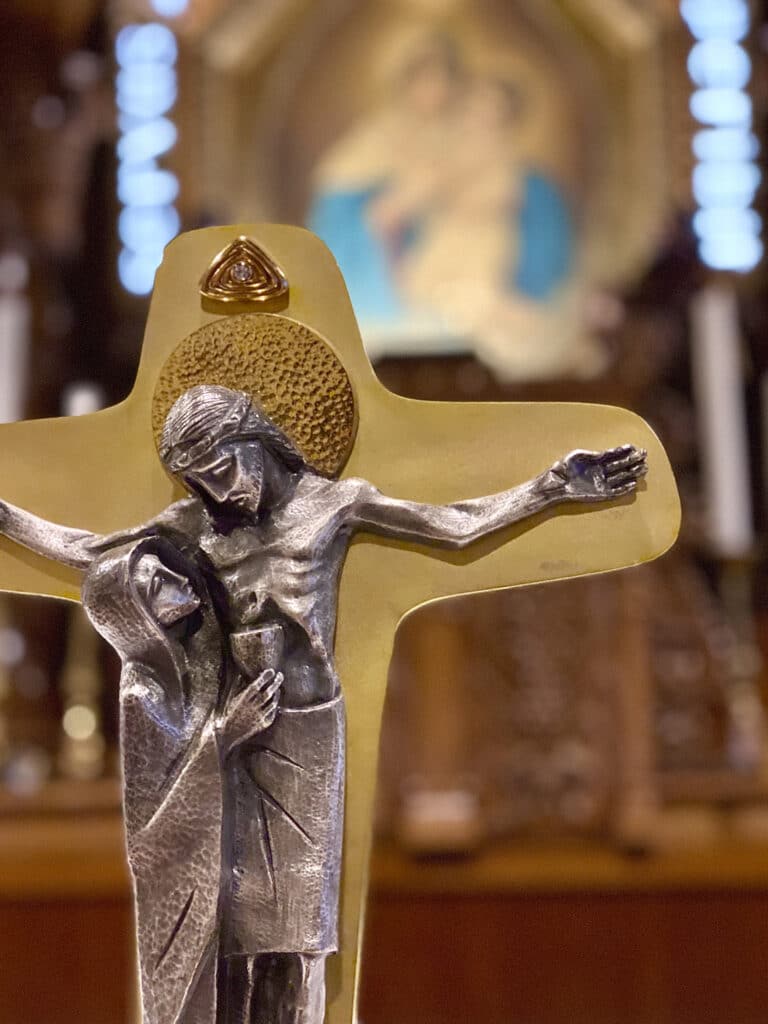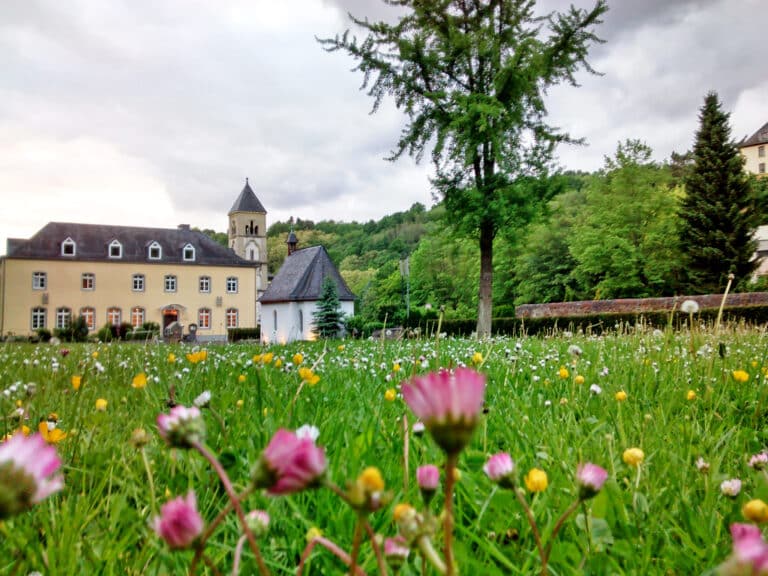As every 18th of the month, we are celebrating a new day when we come together throughout the world to renew our Covenant of Love.
This month of March is especially full and loaded with important dates. At the end of this month, we will celebrate Holy Week, the core and center of our faith. Together with the whole Church, we will immerse ourselves in the “Easter Triduum” to relive the passion, death and resurrection of our Lord.
The 25th will bring us the feast of the “Annunciation”. Mary’s “YES” fully opens for us the fulfillment of the promise of the incarnation of the Word, of “God among us”.
And that is not all…
Furthermore, tomorrow we also celebrate a person who shows us in a special way God’s presence.
Tomorrow, March 19th, we celebrate St. Joseph. Mary’s husband, Father of the Holy Family, patron and protector of the Church.
Perhaps we have often failed to notice him, but I dare say that in practically all our Shrines we find his figure. Undoubtedly in very different styles, colors, and sizes.
The different images of St. Joseph in the Shrines
In the Original Shrine, St. Joseph appears protecting the figure of the Pope and St. Peter’s Basilica, as a sign of his concern for the Universal Church.
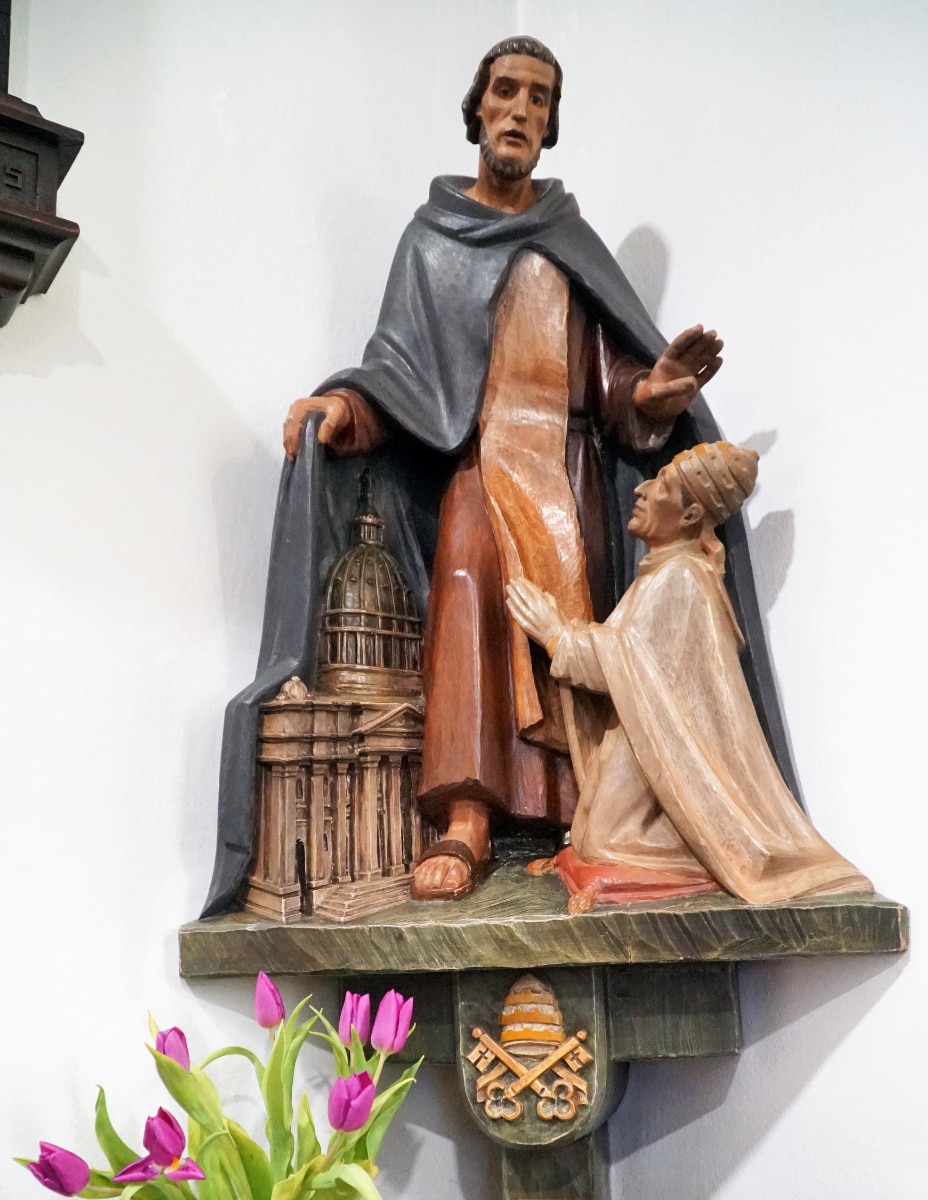
In other Shrines we find the more classical image, with a flowering rod in his hand, as an image of the one in whom the promise of the Old Covenant is fulfilled.
In others there is the figure of St. Joseph with his carpenter’s tools. The hard-working father of a family who in his workshop in Nazareth gave himself entirely to the mission that God had entrusted to him.
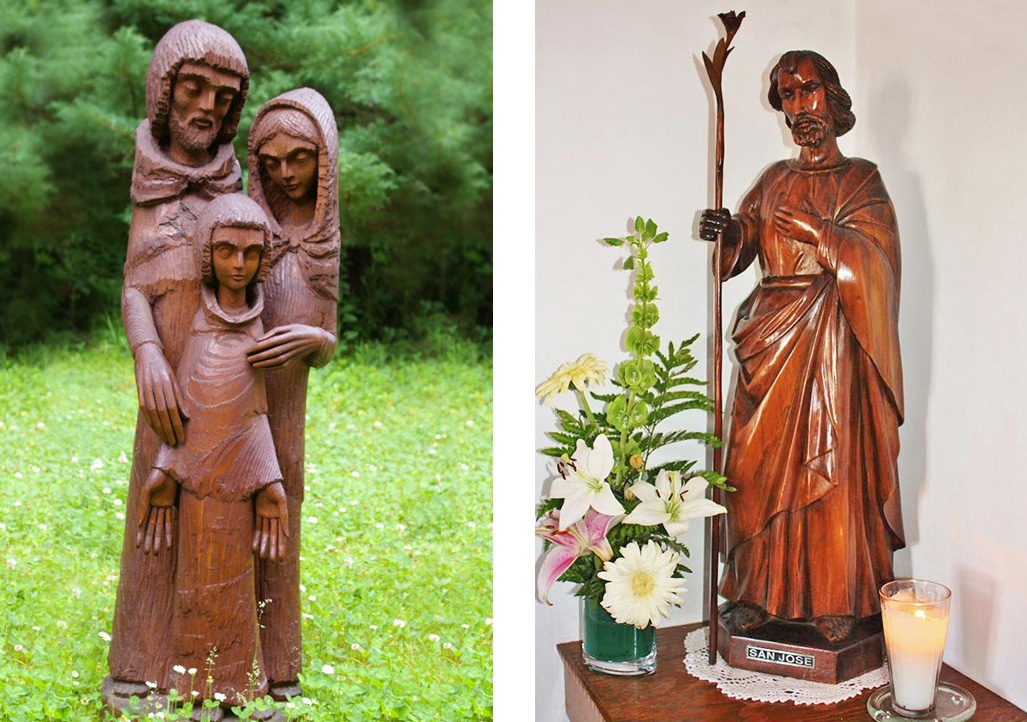
In some Shrines there is the image of the Holy Family, which places the figure of Joseph as the one who fully incarnated human love for Mary and Jesus. The love of a husband and a father.
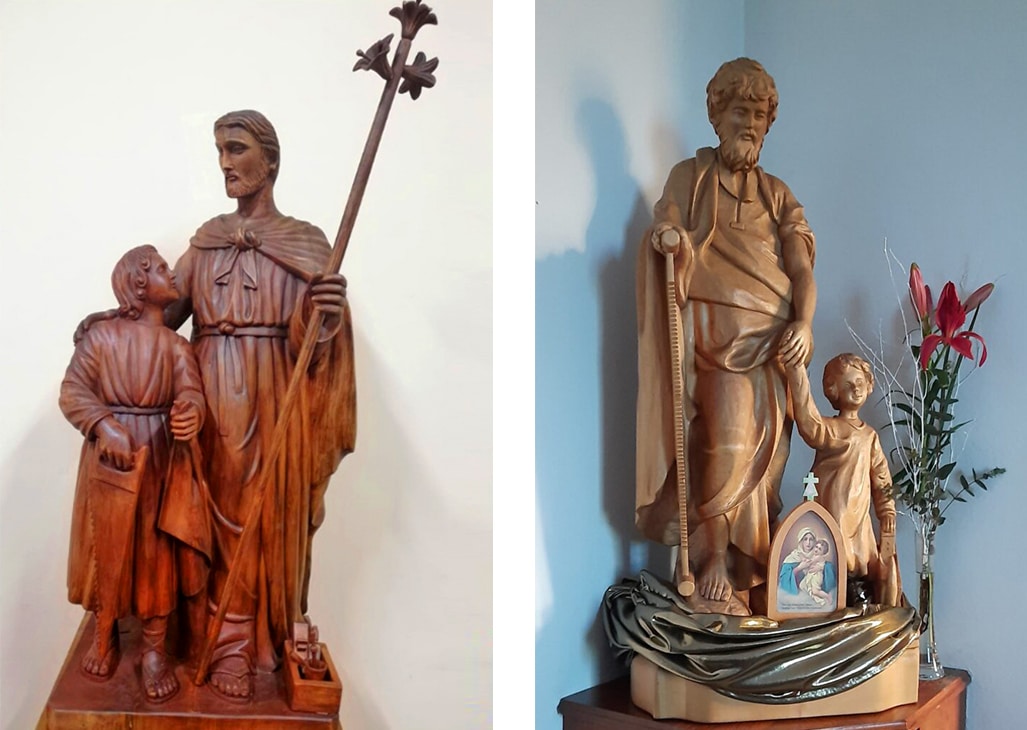
In short, Joseph has many ways of being present in the Shrine. Despite the different representations, there are common elements.
What does St. Joseph have in common in all the Shrines?
The first element is his quieter presence, almost unnoticed. He is not at the center. He is placed in a corner, in the background, as he was in his life. But that doesn’t make him any less important.
I personally believe that the presence of St. Joseph is not a coincidence or a simple personal devotion of the founding generation in the history of Schoenstatt.
I am convinced that St. Joseph is the “Blessed Mother’s best ally. He is the one who made his whole life revolve around Mary. She totally changed his life. At the beginning it was not easy, but his openness to God’s will transformed uncertainty into certainty. It gave full meaning to events that had no explanation.
St. Joseph was not resigned to the change in his plans, but rather embraced what God proposed to him with simplicity, courage, and decision.
We could ask ourselves the question: could Mary have fulfilled her mission without Joseph’s presence, care, and love?
Theoretically, she could have done it, because in the end it was all about God’s will, and God is all-powerful. But God wanted precisely for St. Joseph to be there. He is not unnecessary; he is not an ornament. Neither is he in Schoenstatt, nor in the Covenant or in the Shrine.
An invitation for you
On this Covenant Day I invite you to visit the Shrine and to stop before his figure. If we cannot go on pilgrimage to the Shrine, let us do it spiritually.
I invite you to thank St. Joseph for his openness to God’s plan, for his concrete love for Mary and Jesus.
Let us ask him to grant us his fidelity, his simplicity, his ability to center our lives on what God suggests to us. Let us entrust to him each of our families and our jobs.
For a spiritual visit to the Original Shrine, click on the button:
Two special thanks
Before ending this article, I would like to use this feast of St. Joseph to thank two people who, for me, in the last few months have become a very tangible reflection of St. Joseph.
They are the two “carpenters” who did the work of renovating and adapting the altar of the Original Shrine.
The parallel is obvious when we refer to their trade. But for me it goes much further. For me, as rector of the Shrine, and responsible for that work, they were a true example. They dared to take on a task for which they did not feel completely confident. They also had to travel from their workshop, several kilometers away.
But what really touched and marked me deeply was the affection, respect, and finesse with which they did the work. They did it moved by a profound experience of faith and a tremendous love for Mary and the Lord.
Thank you very much for the work done, and above all for the example of discovering God’s will and giving the best of themselves to carry it out, as St. Joseph did.
May St. Joseph accompany us from our Shrine on this Covenant Day and help us to have a profound renewal during the Holy Week that is approaching.
Father Ignacio Camacho
Secular Institute of the Schoenstatt Fathers
Rector of the Original Shrine

